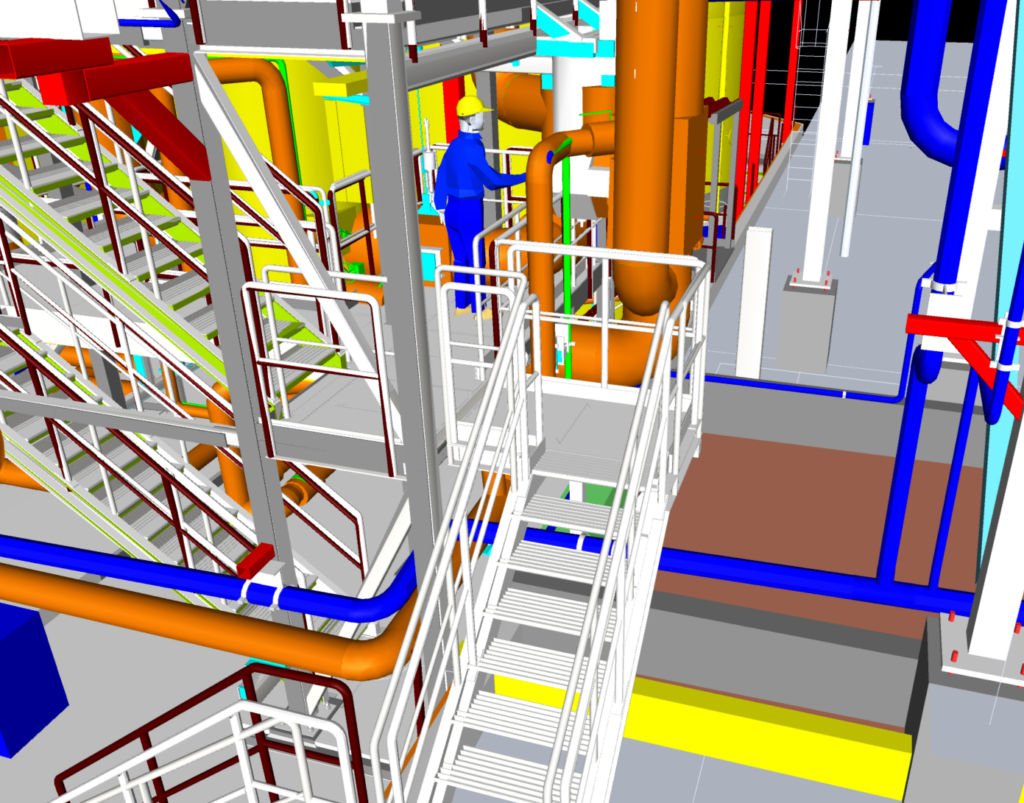MY EXPERIENCE WITH DIGITALIZATION IN MY WORKING CAREER
I started my career as a civil engineer in the mid of 1990s. I worked as a project engineer in a engineering office in Berlin, designing various buildings, such as apartment buildings and office buildings. Since then, I have worked in several engineering offices, also designing private homes and industrial buildings. The image of work has changed significantly since those times compared to today. Digitalization has changed and made a lot of design work easier, especially in terms of design and communication tools, the development has been significant.
At the beginning of my working career, I did not have my own mobile phone yet. There was only one landline phone in the office that everyone used. The design work was done by hand, first drawing with a pencil on sketch paper and then drawing cleanly on different widths of inked tracing paper. Drawing took place on an adjustable drawing table. In addition to pencils, drawing tools included triangle and scale rulers, harps and text templates. A pocket calculator was used for the calculation. E-mail was not yet use then. All necessary data transfer was handled by landline phone, fax or mail. The drawn drawings were sent to the copying facility by post or by taking them there yourself. Over time, computers also started to be used as an aid in planning. They were used both for making calculations and for drawing. At first, drawing on the computer took place in 2D, and later 3D drawing applications also began to appear. Mobile phones and E-mails also came along as means of data transfer, and over time many other useful data transfer and communication applications. Today, the drawings are sent in electronic form to a copying facility for copying.
In the future, I would hope that design could develop even more in an automated direction. This would mean that you would have less traditional mouse drawing and calculations to do. For example, by providing sufficiently comprehensive initial data, the computer would model the desired structures and make the necessary calculations, and you would essentially only be left with the role of an inspector. Even today, it is already possible to make virtual models of structures modeled in 3D. You can go inside the virtual model to look at modeled structures and even measure distances, etc. I hope that in the future I could move inside the virtual model and design there.
I believe that digitalization will change my job description in the future exactly in this direction mentioned above. More applications that facilitate modeling are being developed all the time. In the future, there will certainly be more automation in modeling, so you will probably have more of a job description of monitoring, checking and directing.
An example of a 3D model

THE RISKS OF OPEN DIGITAL SOCIETY
The risks of digital society come to mind for example network attacks / vulnerability of networks and consideration of human factors in automation (e.g. robot cars). A good example is hiking with ravens on roadless roads in Lapland, for example. You should never rely solely on the GPS signal and your mobile phone, but you should have a traditional navigation map with you just in case the worst happens. It’s not the first time that the GPS signal disappears or the mobile phone gets stuck or its battery runs out (especially in winter frost). In my opinion, no digitalization can ever overcome the forces of nature or replace common sense.
DATA PROTECTION RENEWAL
The common goal of the General Data Protection Regulation is to unify data protection legislation among all European Union member states. The legislation also applies to entities outside the EU that store personal data of persons living in the EU outside the EU. The primary purpose of the Data Protection Regulation is to strengthen the rights of persons living in the EU to their own personal data and to simplify the regulatory environment so that both intra-EU and international business becomes easier. The data protection reform brings a certain kind of security and a sense of security when moving around in public communication networks. Some of my design tasks are secret or partly secret, and their falling into the wrong hands could be very harmful for the company and also for me personally.
SELF-EVALUATION
The EU data protection regulation has been familiar to me as a word, but I had not studied it in such depth before. It’s good that it became better known at the latest. In general, I am very careful in my own activities when moving around on social media and the internet. I avoid moving on vague sites and opening vague links. Accuracy and caution should be followed in the future.
COMMENTS ON THE OTHER STUDENT^S BLOGS


I bet it has been pretty awsome to see how engineering has been changing due digitalization. It’s literally changed from hand work to totally computer based work. I would like to hear that has everyone been so open minded to the change. The work must be much faster to do? Or is it? I bet there is some phases in work that have been desappeared via digitalization.
I would be excited to see how advanced the technology in engineering is in ten years. I bet that your idea of “walking inside” buildings and measuring items is working then.
I have the same opinion as you of using only technology isn’t always the safest option. There always have to be a plan B in every situation.